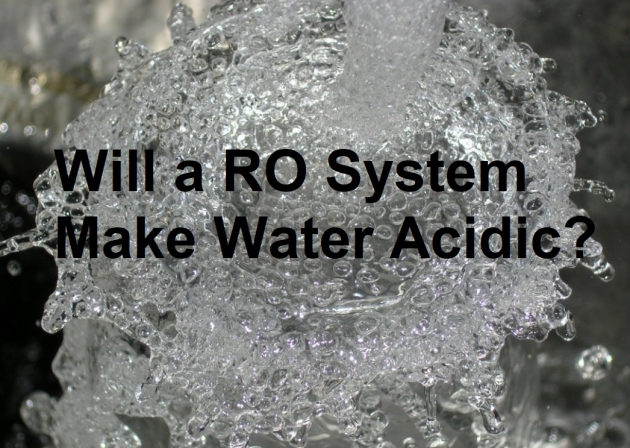Water chemistry can be quite complicated, and water treatment can impact the pH of your water. Reverse Osmosis is considered one of the most effective treatment options and it does produce acidic water, but you need a deeper understanding of basic water chemistry to appreciate the implications. So, here we’ll explore the topic of water acidity and reverse osmosis.
pH is Not Alkalinity:
One of the most critical things to appreciate to understand pH, water chemistry and the potential health role is that pH is not alkalinity. The pH scale has 14 points with numbers above 7 considered basic and the numbers below 7 as acidic.
This means that alkaline pH is scientifically inaccurate. Although many people assume that the term base can be directly substituted for alkalinity, this is counterproductive. In fact, pH refers to the potency of hydrogen ions within a solution and the balance of hydrogen ions (H*) and hydroxyl ions (OH-.) Acidic substances have an excess of H* while bases have an excess of OH-.
The Alkalinity Basics:
Alkalinity refers to the ability to absorb hydrogen ions without a resulting pH change. Essentially, it is the buffering capacity of solutions. Water with a high alkalinity is able to absorb large volumes of acid while the pH remains stable. At some point the buffering capacity will be exceeded and then the pH will decrease. So, while alkalinity can create base pHs, they are not the same thing.
Why Does RO Water Test as Acidic?
RO systems remove dissolved substances from water and treated water typically has more than 95% of substances removed. But, the process is non selective. If all dissolved substances are removed, it will create pure water that has a neutral pH, but no buffering capacity. This is logical since we’ve just discussed that the buffering capacity of substances comes from compounds like alkalinity. If water is pure, there is no inherent ability to control pH changes. So, even extremely small amounts of dissolved materials can cause fluctuations in the pH.
Water is a highly effective solvent and so even if your RO system creates neutral pure water, once it is dispensed, it will start dissolving everything that it comes into contact with, including the carbon dioxide in the air.
Water + Carbon Dioxide = Carbonic Acid:
So, it follows that pure water can be measured as acidic when it contains even a small amount of carbonic acid. As the water has no buffering capacity, it will only take a tiny amount to drop the pH below 7.
The pH will also be altered as soon as your “acidic” water comes into contact with anything else, including your coffee maker, produce and even your mouth. This means that the pH of your RO treated water is pretty much irrelevant.
If you have concerns about your water pH or have water quality issues, be sure to speak to an experienced water treatment specialist. Your technician will be able to assess your water quality and guide you through the appropriate treatment options.

